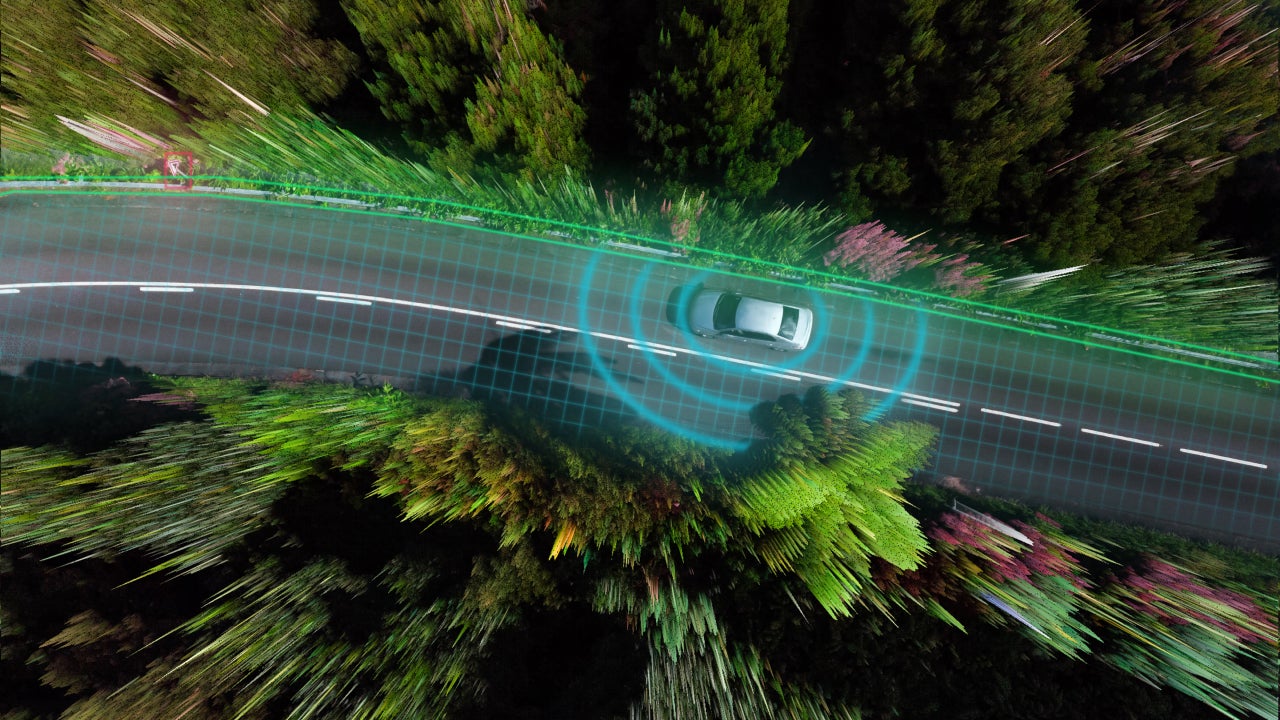For generations, we have been obsessed with self-driving cars. The Love Bug’s Herbie made self-driving cars playful, and the autonomous vehicles from Demolition Man showed how safe the world could be if humans relinquished control of the wheel. However, now that a handful of cars have self-driving features, we can see that reality doesn’t yet live up to the magic of Hollywood. The push for self-driving cars has stalled, and the public doesn’t seem too eager for cars that drive themselves to be on the road.
Self-driving car facts
- Currently, there are no fully autonomous vehicles available to the public.
- Only the Mercedes-Benz S-Class and EQS sedans have been approved for limited Level-3 autonomous driving. (Capital One)
- Waymo One offers a fully autonomous ride-hailing service in the San Francisco Bay Area, Phoenix and Los Angeles. (Waymo)
- Apple and GM canceled their autonomous vehicle programs in 2024. (WCBDNews)
- Elon Musk plans to have the Cybercab, a fully autonomous vehicle that seats two, available to the public by 2027. (Newsweek)
- Due to the cost of vehicle parts and repairs, cars with driver assistance features usually have higher insurance premiums. (Progressive)
How do self-driving cars work?
Self-driving cars use a combination of cameras, sensors and AI and machine learning software to navigate roads without the need of human intervention or input. Cameras and sensors help the vehicle “see” by scanning the environment for vehicles, pedestrians, traffic signs and other objects. The software allows the car to interpret its surroundings and take appropriate action. While a few vehicles have some self-driving features, not everyone is comfortable using them, like Sabrina, a Tesla owner. “I personally never use my autopilot because I drive primarily in the city, and it doesn’t make much sense for me to do so,” says Sabrina.
Autopilot is convenient sometimes when driving long distances on the highway. It does make you keep a decent amount of pressure on the wheel and it’s easy to get kicked off the system, so you still have to be alert while it’s on. I’m also a bit of a control freak, and sometimes when it accelerates around turns it makes me nervous.
— Sabrina F.
Tesla owner
The evolution of advanced driver assistance systems (ADAS) is the stepping stone for cars to become fully autonomous. It all began with features we already take for granted, like antilock breaks and cruise control. Now, more refined features such as automatic parking assist and land departure warnings help minimize small claims. The Highway Loss Data Institute (HDLI) study shows that rear automatic emergency braking (AEB) reduces property damage claims by 28.8 percent.
Other ADAS features becoming more common are:
- Forward collision warning (FCW)
- Front automatic emergency brain (AEB)
- Curve-adaptive headlights
- Blind spot warning (BSW)
- Parking sensors
- Rear cameras
Are self-driving cars safe?
Self-driving vehicles have the potential to be safer than human-driven cars, but the technology isn’t quite there yet. Currently, the only federal law in place regarding self-driving vehicles is H.R3388, the Safely Ensuring Lives Future Deployment and Research in Vehicle Evolution Act, which allows each state to establish its own laws. All states allow for self-driving vehicles, but the rules around whether a human must be present in the car and reporting accidents vary.
The state of California requires manufacturers who test autonomous cars to report any collision within 10 days of the accident. As of February 7, 2025, the California DMV has received 791 collision reports for autonomous vehicles since 2014.
The National Highway Traffic Safety Administration (NHTSA) tracks crashes reported by entity for vehicles with a Level 2 ADAS system. The NHTSA admits that the reports are for cars with Level 2 capability, but this does not mean that the self-driving features were activated at the time of the loss. Also, the numbers reported may be higher due to multiple reports of one incident. Below are the manufacturers with the most car crashes reported to the NHTSA as of January 15, 2025.
| Reporting entity | Number of car crashes |
|---|---|
| BMW of North America | 18 |
| Ford Motor Company | 25 |
| General Motors | 38 |
| Honda (American Honda Motor Co.) | 112 |
| Kia America, Inc. | 11 |
| Mercedes-Benz USA, LLC | 12 |
| Nissan North America, Inc. | 13 |
| Subaru of America, Inc. | 45 |
| Tesla, Inc. | 1,831 |
| Toyota Motor Engineering & Manufacturing | 25 |
According to AAA’s latest survey on autonomous cars, drivers are more apprehensive about self-driving cars now than in the past. The 2024 data shows that 66 percent of drivers are afraid of fully self-driving cars versus 54 percent of drivers in 2021. When Brad Cutrer was ready to buy his next vehicle, he said a self-driving car wasn’t something he wanted to consider, even though several of his friends drive Teslas.
I personally did not feel confident that a fully self-driving car was safe for long-term travel. Specifically dealing with both rain and snow, seems like opportunities for disaster.
— Brad Cutrer
Ford owner
Instead, he went with a Ford Mach E and declined the BlueCruise hands-free driving subscription.
Will cars ever be fully automated?
Several vehicles are well on their way with some autonomous driving features. But what is the ultimate end goal? There are six levels of automation to distinguish between partially autonomous and fully autonomous vehicles.
| Levels of autonomous driving | Definition |
|---|---|
| Level 0 | A human does all the driving without assistance. |
| Level 1 | Braking and accelerating or steering assist the human driver using an advanced driver assistance system (ADAS). |
| Level 2 | Braking/accelerating and steering can be controlled autonomously at the same time, though the human must monitor conditions continuously and perform remaining tasks. |
| Level 3 | The automated driving system (ADS) can perform all driving tasks under certain conditions. The human driver must be ready and able to take back control when requested by the ADS and must perform all tasks when not under optimal conditions. |
| Level 4 | The ADS performs driving tasks and monitors the environment in certain conditions without the human driver needing to pay attention. |
| Level 5 | The ADS fully drives the vehicle in all conditions without the need for humans or passengers to pay attention or be involved in driving. |
Goldman Sachs forecasts that Level 3 vehicles will make up almost 10 percent of the auto market by 2030, with Level 4 and 5 cars being available, but will only make up 2.5 percent of the market. It’s predicted that 2040 is when Level 4 and 5 self-driving cars will become more common.
If you ask Elon Musk, the future is a lot closer than we think. In October 2024, Musk revealed his latest, the Cybercab and Robovan. Neither vehicle will have a steering wheel or pedals, and he states that at least the Cybercab will be available before 2027.
Pros and cons of self-driving cars
While cars that drive themselves have the potential to reshape transportation, they still face major hurdles before becoming mainstream.
Pros
- Reduces human error on the road
- Reduces traffic congestion
- Provides transportation for those who can’t drive themselves
- Increases fuel efficiency and lowers emissions through optimized braking and acceleration
- Promotes productivity and convenience since passengers can work or relax while riding
Cons
- The high cost may make these vehicles unaffordable for many people
- Safety and privacy concerns due to data and software hacks
- Concerns about the ethical dilemmas self-driving cars will face and how they will prioritize human lives
- Potential for job losses, especially in the ride-hailing and trucking industries
- Legal gray areas arise when determining who is at fault for accidents — the vehicle owner, manufacturer or software developer
How will self-driving cars change the auto insurance industry?
Self-driving vehicles will shake up the insurance industry, and the odds are it will be a very rocky road. One of the biggest benefits auto manufacturers promote is how much safer the road will be with autonomous vehicles. Even if that is true, the transition period could be messy.
Drastically fewer car crashes and fatalities should lower car insurance rates, but the transition to self-driving cars could have unknown risks, or cause more accidents as people adjust to the new way of driving and navigating the roads. Additionally, the technology needed to make vehicles autonomous is still very expensive. Will the cost of parts and labor outweigh the lower risk of safe driving? Or will we reach a point where parts are readily available and labor isn’t so specialized?
Litigation abuse is already causing auto rates to increase, and the liability surrounding self-driving cars is murky. Currently, much of the underwriting and rating of auto insurance is based on the driver, but who’s fault is the accident if there is no driver? The deep pockets of software companies and auto manufacturers could prompt more lawsuits, both fraudulent and legitimate. Most states allow car insurance companies to use age as an insurance rating factor, but experience wouldn’t come into play for a self-driving car.
And then there is the reality that these cars will be controlled by software, which can be hacked or glitchy. Will policyholders need to buy additional types of insurance coverage for software failure? Insurance companies will be able to use real-time vehicle data to rate policies, which could make car maintenance one of the most important rating factors. How will policyholders feel about having that much of their personal data publicly accessible?
While self-driving cars could ultimately make insurance cheaper in the long run, the legal and regulatory challenges facing lawmakers, insurers and policyholders will be an uphill battle. As of now, we are left with more questions than answers.
Read the full article here





